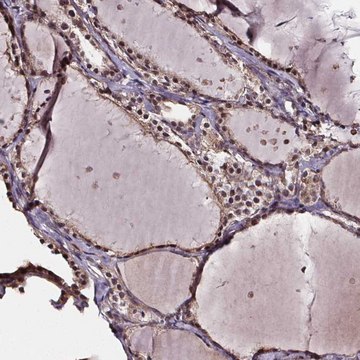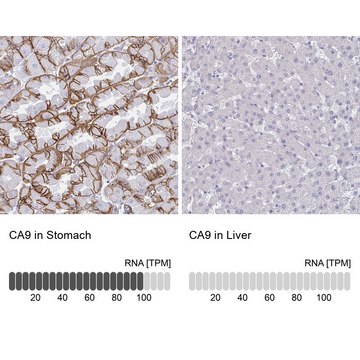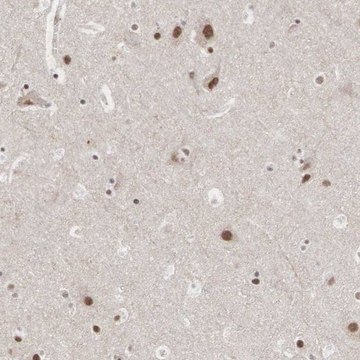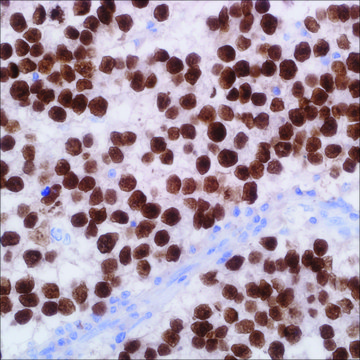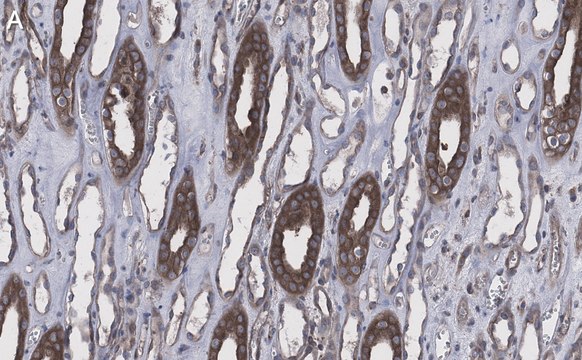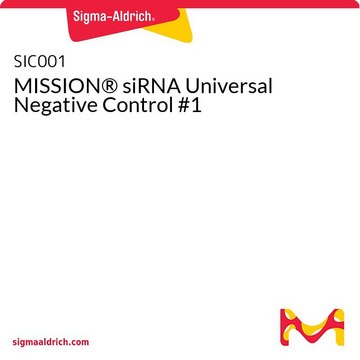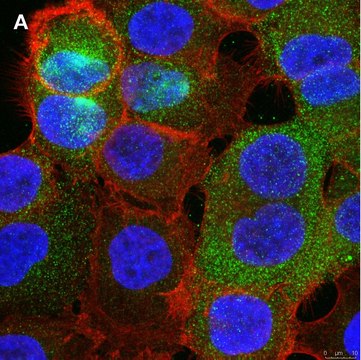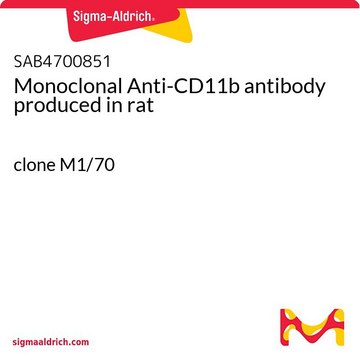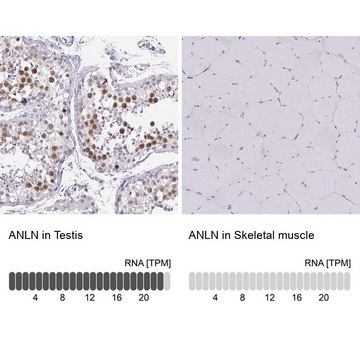推荐产品
生物来源
rabbit
质量水平
偶联物
unconjugated
抗体形式
affinity isolated antibody
抗体产品类型
primary antibodies
克隆
polyclonal
表单
buffered aqueous solution
种属反应性
mouse, human
技术
immunohistochemistry: suitable
western blot: 500-3000
NCBI登记号
UniProt登记号
运输
wet ice
储存温度
−20°C
基因信息
human ... OPN3(23596)
免疫原
Synthetic peptide corresponding to a region within amino acids 1 and 45 of Opsin 3 according to NP_055137
应用
Suggested starting dilutions are as follows: IHC-Fr: 1:100-1:1000, IHC-P: 1:100-1:1000, WB: 1:500-1:3000. Not yet tested in other applications. Optimal working dilutions should be determined experimentally by the end user.
生化/生理作用
Opsins are members of the guanine nucleotide-binding protein (G protein)-coupled receptor superfamily. In addition to the visual opsins, mammals possess several photoreceptive non-visual opsins that are expressed in extraocular tissues. This gene, opsin 3, is strongly expressed in brain and testis and weakly expressed in liver, placenta, heart, lung, skeletal muscle, kidney, and pancreas. The gene may also be expressed in the retina. The protein has the canonical features of a photoreceptive opsin protein. [provided by RefSeq]
特点和优势
Evaluate our antibodies with complete peace of mind. If the antibody does not perform in your application, we will issue a full credit or replacement antibody. Learn more.
外形
1XPBS, 1% BSA, 20% Glycerol (pH7). 0.01% Thimerosal was added as a preservative.
免责声明
Unless otherwise stated in our catalog or other company documentation accompanying the product(s), our products are intended for research use only and are not to be used for any other purpose, which includes but is not limited to, unauthorized commercial uses, in vitro diagnostic uses, ex vivo or in vivo therapeutic uses or any type of consumption or application to humans or animals.
未找到合适的产品?
试试我们的产品选型工具.
警示用语:
Warning
危险声明
危险分类
Aquatic Chronic 3 - Skin Sens. 1
储存分类代码
10 - Combustible liquids
WGK
WGK 2
闪点(°F)
Not applicable
闪点(°C)
Not applicable
法规信息
新产品
Toshiaki Yoshimoto et al.
BMC cancer, 24(1), 664-664 (2024-06-01)
Recent studies have shown that blue light-emitting diode (LED) light has anti-tumor effects, suggesting the possibility of using visible light in cancer therapy. However, the effects of blue light irradiation on cells in the tumor microenvironment, including tumor-associated macrophages (TAMs)
Bin Li et al.
Oncology letters, 11(3), 1693-1698 (2016-03-22)
While the anti-tumor actions of ginsenosides from Panax notoginseng are well-studied, the anti-proliferative activity of 20(S)-protopanaxadiol saponins (PDS) in Sanchi ginseng on human ovarian cancer has not been reported, nor has its effect on migration of SKOV3 cells been investigated.
Yuhei Waki et al.
Scientific reports, 13(1), 19954-19954 (2023-11-16)
Light-emitting diode (LED) irradiation has been used in the differentiation of mesenchymal stem cells into a variety of cell types. This study investigated the effect of green LED (GLED) irradiation on the differentiation of adipocyte-derived mesenchymal cells into hepatocyte-like cells
Toshiaki Yoshimoto et al.
Annals of gastroenterological surgery, 2(2), 154-161 (2018-06-05)
Light emitting-diodes (LED) have various effects on living organisms and recent studies have shown the efficacy of visible light irradiation from LED for anticancer therapies. However, the mechanism of LED's effects on cancer cells remains unclear. The aim of the
Toshiaki Yoshimoto et al.
Oncology reports, 47(5) (2022-04-14)
Irradiation with a specific wavelength of light using light‑emitting diodes (LEDs) has various effects on cells and organisms. Recently, the antitumor effects of visible blue light on tumor cells were reported; however, the mechanism and effects on the tumor microenvironment
我们的科学家团队拥有各种研究领域经验,包括生命科学、材料科学、化学合成、色谱、分析及许多其他领域.
联系技术服务部门
